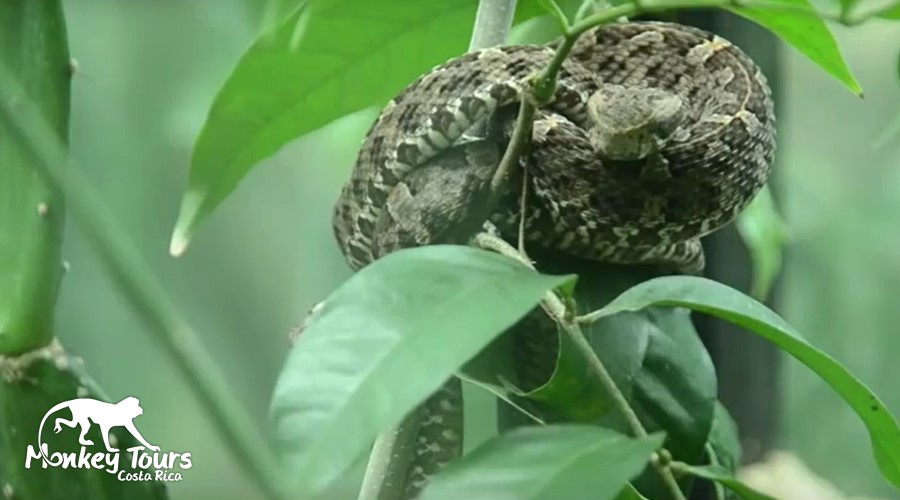Fer-de-Lance of Costa Rica
The Fer-de-Lance is definitely a snake to keep your distance from when traipsing about the rainforests of Costa Rica. This viper is quite a venomous one.

Distribution
The Fer-de-Lance is found from the Caribbean Coast of Mexico through Central America. It inhabits lowland wet tropical forests and premontane rainforests for the most part, and has a particular fondness for banana plantations. They can be spotted in Palo Verde National Park, Chirripó National Park, Corcovado National Park, Tortuguero National Park and Carara National Park.
Mating & Reproduction
On the Pacific Coast, the population of Fer-de-Lance mates from September to November, and mating takes place from March through April on the Caribbean Coast. They usually produce clutches from five to forty on the Pacific Coast, and fourteen to eighty six young snakes are produced on the Caribbean side.
Males pursue females, and perform a short courtship dance. When a female accepts the male’s advances, the male will make a short chase of the female. After the male catches the female, she elongates her body to accommodate the male.
Behavior
The Fer-de-Lance commonly pursues prey such as small reptiles, small amphibians, small mammals and birds. It is a solitary nocturnal creature that is more active when the weather is warmer. Adolescent Fer-de-Lances are somewhat arboreal, but they dwell on the ground once they mature.
The Fer-de-Lance is an excitable snake that will flee many a situation when it is surprised. In some instances, however, it will turn and strike.
Miscellaneous Info
Known by the Spanish name of Terciopelo (skin like velvet), this snake has a high level of toxicity. It is, therefore, very dangerous, and any antagonizing of the snake should be avoided at all costs.
Where to see it in Costa Rica: Palo Verde National Park, Chirripó National Park, Corcovado National Park, Tortuguero National Park, Carara National Park
Diet: small reptiles, small amphibians, small mammals, birds
Migration Pattern: non-migratory
Habitat: lowland wet tropical forest, premontane rainforest
Size: length=1.2-1.8 m weight=6 kg (females are larger than males)
Species: Bothrops asper
